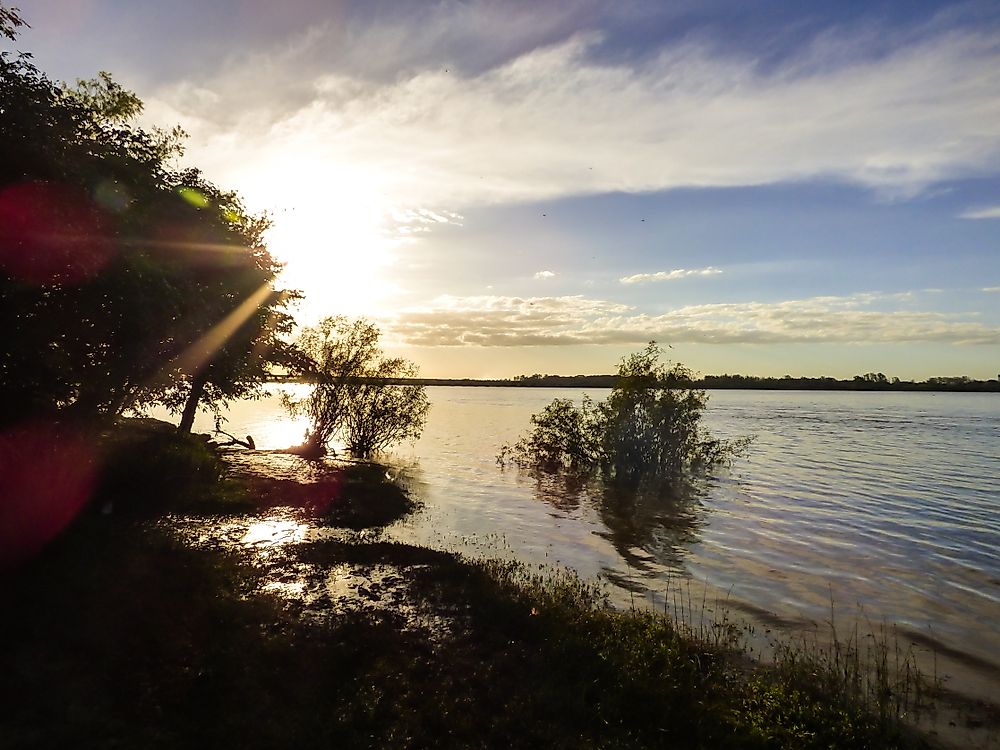Native Amphibians Of Uruguay

Amphibians are ectothermic vertebrates that are classified into Class Amphibia. Uruguay has approximately 48 amphibian species of which 28 species are categorized by the IUCN as “Least Concern.” The rest of the amphibians considered critically endangered. These native amphibians of Uruguay are also native to some of the South American countries such as Brazil and Argentina. Below are some of amphibians native to Uruguay.
Some Of Uruguay's Native Amphibians
Dwarf Treefrog- Dendropsophus nanus
The Dwarf Treefrog is usually brownish in color with their eyes darker than their skin. The Dwarf Treefrog’s diet mainly consists of spiders and dipterans. They also feed on other arachnids. When they cannot access food, especially during the cold season, they use the fat reserves in their bodies for nourishment. They live in herbaceous vegetation and at the banks of stagnant waters and reproduce in the stagnant waters. They can, however, thrive well in various other habitats such as tropical rainforests. Just like their name suggests, they tend to spend lots of time on treetops.
Two-Colored Oval Frog- Elachistocleis bicolor
Two-Colored frogs are bi-colored, just like their name suggests. Their upper surface is dark brown or a dull color while their lower surface is a bright shade of yellow. They measure approximately 24 mm in length and are oval-shaped. Their rear end is usually larger than the head. Two-Colored frogs mostly live beneath dry leaves debris in gardens. To avoid encounters with their predators, the adults are usually nocturnal. Their diet is mostly composed of ants and other small insects. The frogs hatch their eggs on the stagnant pool.
Montevideo Tree Frog- Hypsiboas pulchellus
Montevideo treefrog lives in open habitats such as grasslands, flooded savannas, and rainforests. They lay their eggs in stagnant and quiet ponds, or in flooded grasslands. They have bright yellowish eyes with dark pupils and they have slender bodies. The males are smaller in size than the females. They have large calcars. The hidden surface of their feet and thighs are brightly colored than the entire body. Their eggs float on the water surface after they are laid. Their diet is mostly composed of crickets, spiders, dipterans, and other small arachnids and insects.
Pointedbelly Frog- Leptodactylus podicipinus
The Pointedbelly frog lives in the grasslands and in open habitats. They however frequent terrestrial areas that are close to ponds ore swampy areas.They also prefer areas that experience seasonal flooding. They lay their eggs in foam nests at the edges of the terrestrial waters.Physically, the snouts of the females are usually larger than those of the males. The frog has yellow spots on their groins and at their rear end.
Rapids Frog- Limnomedusa macroglossa
Rapids frogs mostly live in open rainforests, or in open rocky areas close to river banks or water bodies. Their heads are wide as the rest of their bodies and have long limbs compared to most members of its family. Their mating seasons is usually between August and February. They have round yet flat tongues and a snout length of 36 to 55 mm.
Threats Of Native Amphibians Of Uruguay
Most native amphibians of Uruguay are endangered with about 50% listed in the IUCN red list as endangered. Destruction of their natural habitat is the main reason as to why they are endangered. Land reclamation in Uruguay has leads to their habitat loss. The process of draining land to settle people or for agriculture destroys the habitats and their reproduction sites. Water pollution has also led to the loss of a number of amphibians.
Native Amphibians of Uruguay
| Rank | Native Amphibians of Uruguay | Scientific Name |
|---|---|---|
| 1 | Red-spotted Argentina frog | Argenteohyla siemersi |
| 2 | Dwarf treefrog | Dendropsophus nanus |
| 3 | Two-colored oval frog | Elachistocleis bicolor |
| 4 | Montevideo tree frog | Hypsiboas pulchellus |
| 5 | Pointedbelly frog | Leptodactylus podicipinus |
| 6 | Rapids frog | Limnomedusa macroglossa |
| 7 | Uruguay harlequin frog | Lysapsus limellum |
| 8 | - | Melanophryniscus pachyrhynus |
| 9 | Four-eyed frog | Pleurodema bibroni |
| 10 | Lesser swimming frog | Pseudis minuta |
| 11 | Hensel’s swamp frog | Pseudopaludicola falcipes |
| 12 | - | Rhinella achavali |
| 13 | Schneider's toad | Rhinella schneideri |











